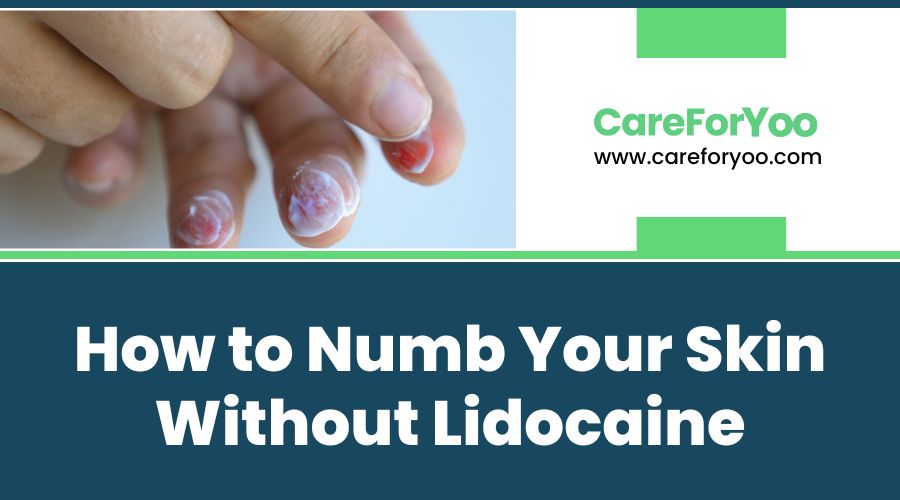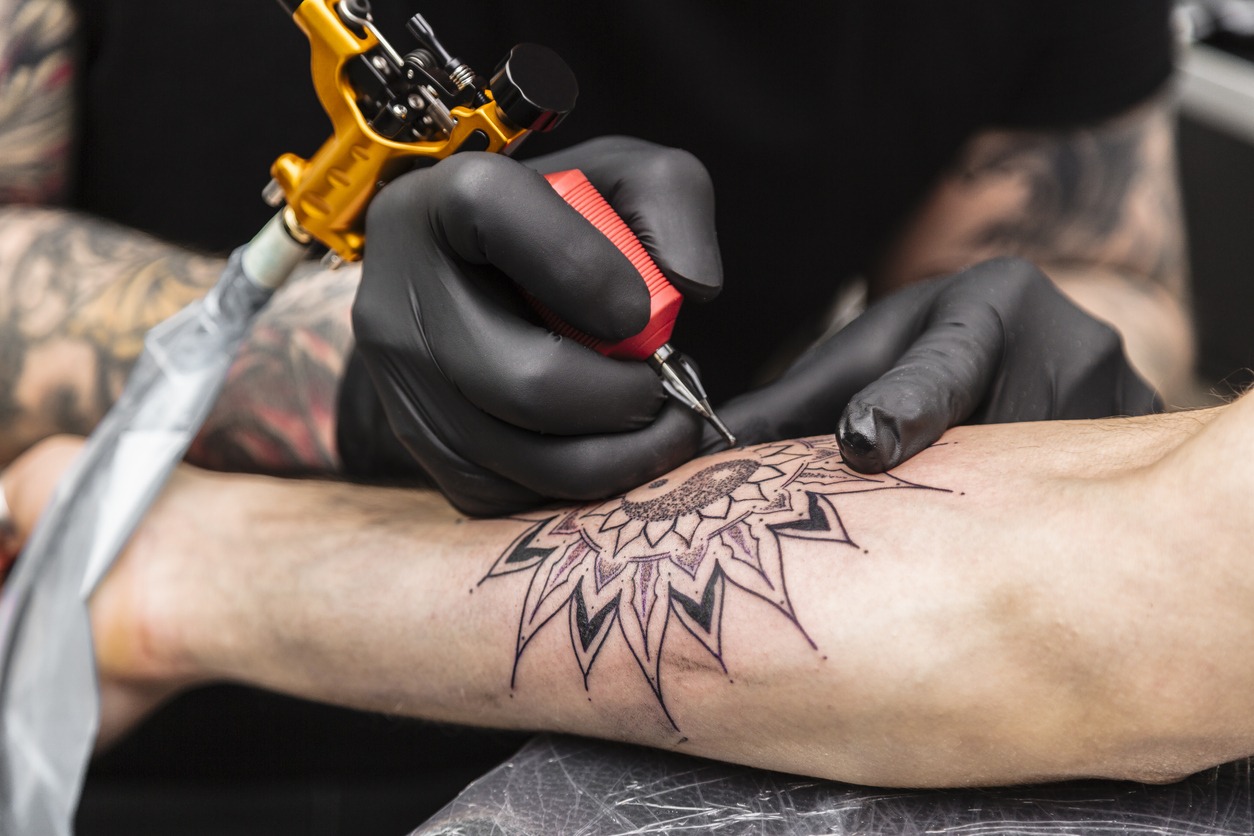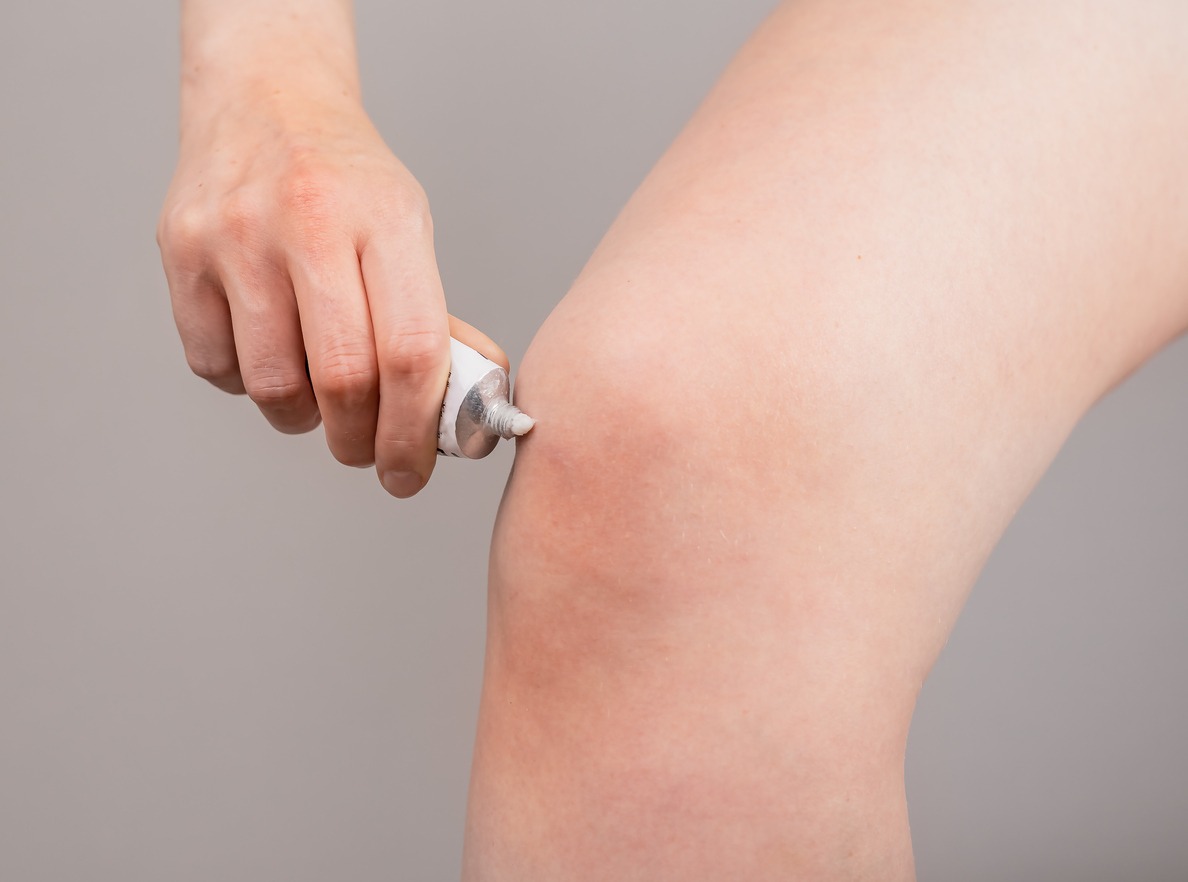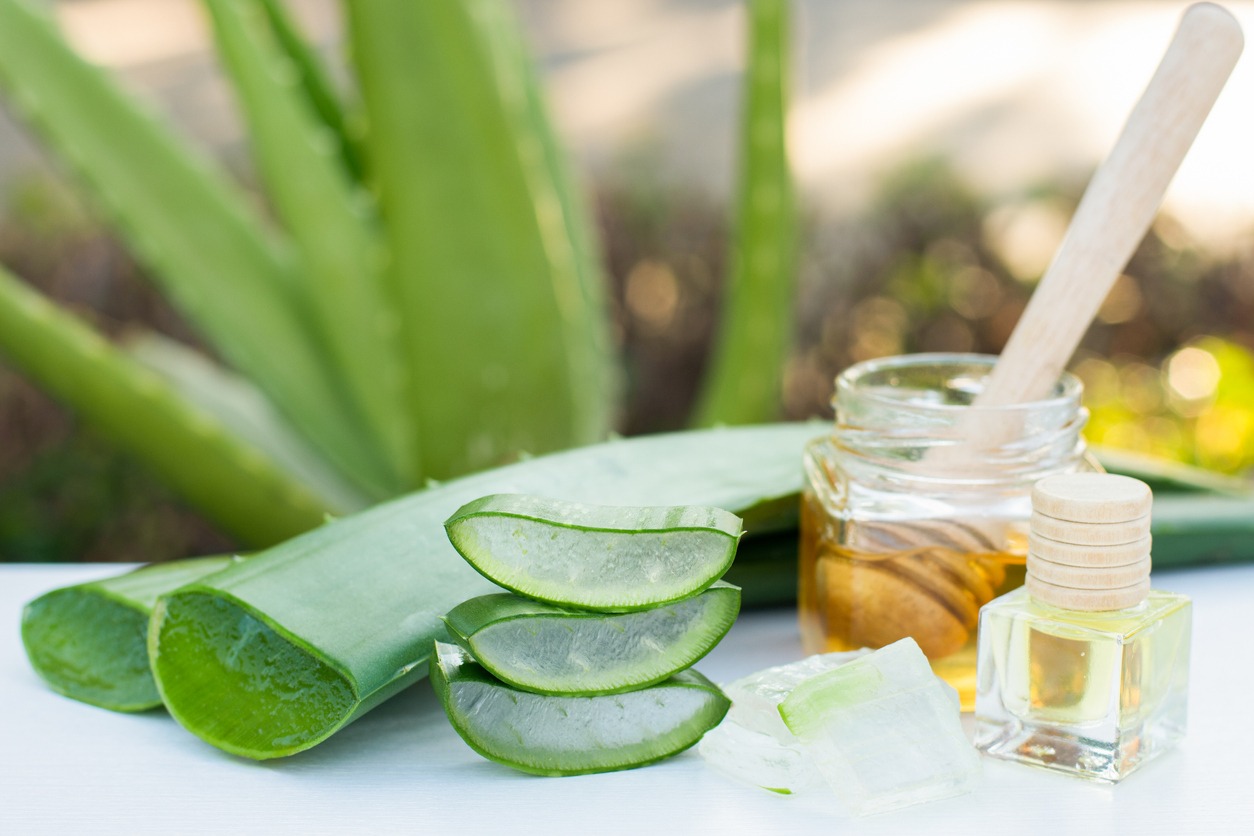There are many different reasons why you may need to numb your skin. It can be done before a painful procedure, such as a cosmetic treatment or a tattoo. Aside from that, you can also choose to numb your skin if you have a cut or burn for pain relief. Numbing the skin can be done both naturally and medically, and these various ways also have different degrees of effectiveness.
One of the most popular ways to numb the skin is through the use of lidocaine. It is a local anesthetic that is used in different superficial and invasive procedures. However, not all people can use lidocaine, as some may be allergic to it. There are also certain health conditions that may react negatively with the use of lidocaine, such as those suffering from heart ailments.
If you need to numb your skin before a painful procedure or for pain relief but can’t use lidocaine, no worries, as there are many other ways that you can choose from. Some of them are by prescription, some can be bought over the counter, and others can be found at home or in your garden. In this post, we are giving you some of the effective ways to numb your skin without lidocaine.
Reasons to Numb the Skin
The two main reasons to numb the skin are to reduce pain before an expected painful procedure and to relieve pain after the procedure has occurred. Below are more details about these reasons:
Before a Painful Procedure
Below are some examples of painful procedures wherein you may need to numb your skin:
Botox or Injections
Botox and filler injections are some of the most common cosmetic treatments that are given by dermatologists. Botox is a procedure done to reduce wrinkles and fine lines. Fillers, on the other hand, are injected into the skin to reduce wrinkles, plump the lips, and more. These procedures are both painful. Therefore, using a numbing cream to make the experience more comfortable can be essential.[1]
Tattoos
There are some people who get tattoos who look for a numbing cream to make their experience less painful, particularly if it is their first time or when the tattoo that they want is large and may take longer to finish. There are many over-the-counter creams that are made for this specific use.[1]
Needle Pricks
It is common for many people to be afraid of needles. Their fear can make the actual pain of the needles feel exaggerated. Therefore, numbing the skin before a needle prick, such as before an IV insertion or before having blood taken, can be helpful for patients who have a fear of needles.[1]
Micro Needling
This procedure uses fine needles to make small punctures in the skin to promote the growth of collagen and new skin. Since it involves puncturing the skin with needles, it can be painful. That is why numbing creams are typically used before this procedure is done.[1]
Hair Removal
Both laser hair removal and waxing can be painful, particularly if they are being done on a large part of the body. Numbing products can be used to reduce the pain of hair removal procedures.[1]
Piercing
Piercing can be similar to a needle prick but more painful, depending on the part of the body being pierced and the size of the piercing. Therefore, you can apply some numbing cream on the skin to be pierced to avoid pain.[1]
After an Injury
Many people also use numbing products to relieve pain after an injury. Below are some examples of injuries wherein you can use numbing products:
Cuts, Scrapes, and Burns
Most minor scrapes, burns, and cuts do not need topical pain relief. But a lot of natural and manufactured products can help reduce pain after an injury, particularly for relief from minor burns.[1]
Poison Ivy or Rash
A rash is also called dermatitis by medical professionals. It often occurs from contact with an irritating substance. A rash can be mildly uncomfortable or painful, and applying some numbing cream on the affected area may help lessen the pain.[1]
Sunburn
Sunburn can be painful and dangerous to the health. That is why using broad-spectrum sunscreen and wearing sun protection when going outdoors are important. However, if ever sunburn occurs, you can also use topical pain relief products or numbing creams to reduce the pain while the burn heals.[1]
Peripheral Neuropathy
After an injury like a fall or accident, nerve damage may occur. Nerve pain can’t be easily treated using the same remedies as injuries to the skin. But there are topical numbing products and natural treatments out there that may help ease the pain.[1]
Different Methods to Numb the Skin
As we’ve mentioned earlier, lidocaine is not the only thing that can be used in order to numb the skin. If you are allergic to it or have a health condition that may react negatively to this active ingredient, there are many more options that you can choose from. Below are the different methods to numb the skin without lidocaine:
Numbing the Skin Medically
For local numbing and pain control, most doctors use local anesthetics that are approved by the U.S. Food and Drug Administration. A lot of these are also available in over-the-counter strength for home use. Below are some examples:[2]
- Benzocaine (Lanacane, Dermoplast, Solarcaine)
- Pramoxine (Prax, Sarna Sensitive, Proctofoam)
- Dibucaine (Rectacaine, Nupercainal)
- Tetracaine (Viractin, Ametop Gel, Pontocaine)
Drug products that have been developed specifically for numbing the skin are often more effective compared to other methods. It’s because they contain anesthetic ingredients that have been made specifically for their numbing ability. These anesthetics can be found in various strengths at drug stores and online stores. There are also combinations that are sometimes available over the counter.[1]
Always apply the cream to a small area. Applying it to a large area can increase the risk of large-volume systemic absorption. The cream should not include a DMSO, which is an enhancer that delivers the cream’s molecules right into the bloodstream. A lot of creams that come with a 10% concentration of these anesthetics include this enhancer. Creams with such large concentrations are not approved by the FDA, so you should stay clear of these.
Do not apply the cream on any broken skin, and consult a doctor before using them if you’re pregnant. If you feel any burning, wipe the cream off, and wash your skin with cold water. You should have it checked by a doctor as soon as possible. If you use these creams responsibly, they are a very effective way to numb your skin without lidocaine.
Numbing the Skin Naturally
Aside from using topical numbing creams sold at pharmacies and drug stores, there are also many natural products that you can use to effectively numb your skin to relieve pain or to prepare for painful procedures.[1] The term “natural” can sometimes be overused. When we say natural numbing methods, it means using products that are not manufactured synthetically for a specific intent, like lidocaine, but may instead be grown and harvested.
There can be additional processing steps involved when it comes to natural numbing products, such as extracting oil from plants, but the product itself is not synthesized in a laboratory. For thousands of years, plant-based products have been used by a lot of people who have been finding ways to numb their skin using things from the environment.
Natural numbing products are not necessarily better or worse compared to those products produced in laboratories. Since they were not made specifically for numbing purposes, their effects are often weaker compared to the topical numbing creams that were made specifically for numbing the skin.[2] To provide you more ideas about these, below are the different examples of products that can numb the skin naturally:
- Chamomile: There are many ailments that can be treated by chamomile. These may include rashes, wounds, inflammation, and more. The medical uses of this herb have also been documented well. Topically, chamomile is mostly used as an anti-inflammatory, and it also helps promote wound healing.[2]
- Aloe Vera: This is a popular treatment for sunburn. It helps reduce the redness of the skin and may help heal the burn faster. The main benefit that you can get from using aloe vera is the cooling and hydrating effect of the gel, which relieves some of the pain while the sunburn heals.[2]
- Clove Oil: This is also called eugenol. It is mostly used for managing oral pain due to toothache. Based on some studies, clove oil is comparable to benzocaine for topical numbing.[2]
- Capsaicin: This ingredient is found in chili peppers. It is what makes them hot. When capsaicin is applied to the skin, it can confuse the pain signals by overloading them, which reduces the sensation of pain.[2]
- Plantain: This can be applied to a burn directly in order to soothe the pain. It can also be used to treat inflamed skin and insect bites.[2]
- Essential Oils: Oils like rosemary, peppermint, and lavender have been shown to have some benefits when it comes to pain reduction. However, remember that when these essential oils are applied topically, they need to be diluted with a carrier oil to avoid skin irritation.[2]
Mechanical Methods of Numbing the Skin
A mechanical method of numbing the skin pertains to a method that does not involve the application of a product, whether it is natural or medical. Since the sensation of pain depends on nerve signals being sent from the site of the painful stimulus, it is possible to confuse or overwhelm the pain signals being sent.[1]
Use Ice for Numbing
One example of a mechanical method of numbing the skin is through the use of ice. Ice causes numbing by shrinking the blood vessels in the skin. Blood stops flowing to the area, so it turns pale and goes numb. Using ice is a very good way to numb your skin, especially for insect bites, small injuries, bruises, and other such issues. In fact, it helps you out instantly, way faster than any medicine would. However, numbness from ice isn’t long-lasting, so this method shouldn’t be used before any time requiring procedures. Using ice is a very effective short-term way to numb your skin without lidocaine.
Another thing to take care of is the possibility of a frost burn. Frost burn happens when the tissue underneath the skin freezes. This is most common on fingers, toes, and other extremities. In such a case, warm the affected area with a hot compress. Patting the skin can also cause a temporary numbing in the skin.
How to Choose the Right Numbing Product
Deciding on the right numbing product for you depends mainly on whether you are getting a procedure or treating an injury. It is also best to consult with your doctor or healthcare provider before using any product to numb your skin. If lidocaine products are not suitable for you, there are many other over-the-counter and natural products out there that you can use to numb your skin. But remember that prescription-strength products are much stronger and more effective. Also, always keep in mind that numbing products, no matter what type, have safety considerations regardless of how you intend to use them.[1]
If the tips and tricks we shared above does not work for you, maybe you need to use lidocaine creams to numb your skin. You may check out our Ultimate Guide to Strong Lidocaine Creams for more recommendations.
Conclusion
There are indeed lots of different options on how to numb the skin without the use of products that contain lidocaine. If you have sensitive skin or are allergic to most of the contents of over-the-counter and prescription numbing products, you can instead opt for natural numbing products or mechanical numbing products like ice. They can be effective in numbing the skin, too, particularly in decreasing the pain of minor procedures and injuries. We hope this post helped you learn more about how to numb your skin without lidocaine.
References
[1] Woodlandhills Pharmacy, E. (2021, December 14). Numbing the skin – natural, mechanical, and drug-based methods. Park Compounding Pharmacy. Retrieved January 3, 2023, from https://www.parkcompounding.com/how-to-numb-the-skin-naturally-and-medically/
[2] Frothingham, S. (2018, July 24). How to numb skin naturally and medically. Healthline. Retrieved January 3, 2023, from https://www.healthline.com/health/how-to-numb-skin#medical-treatment





